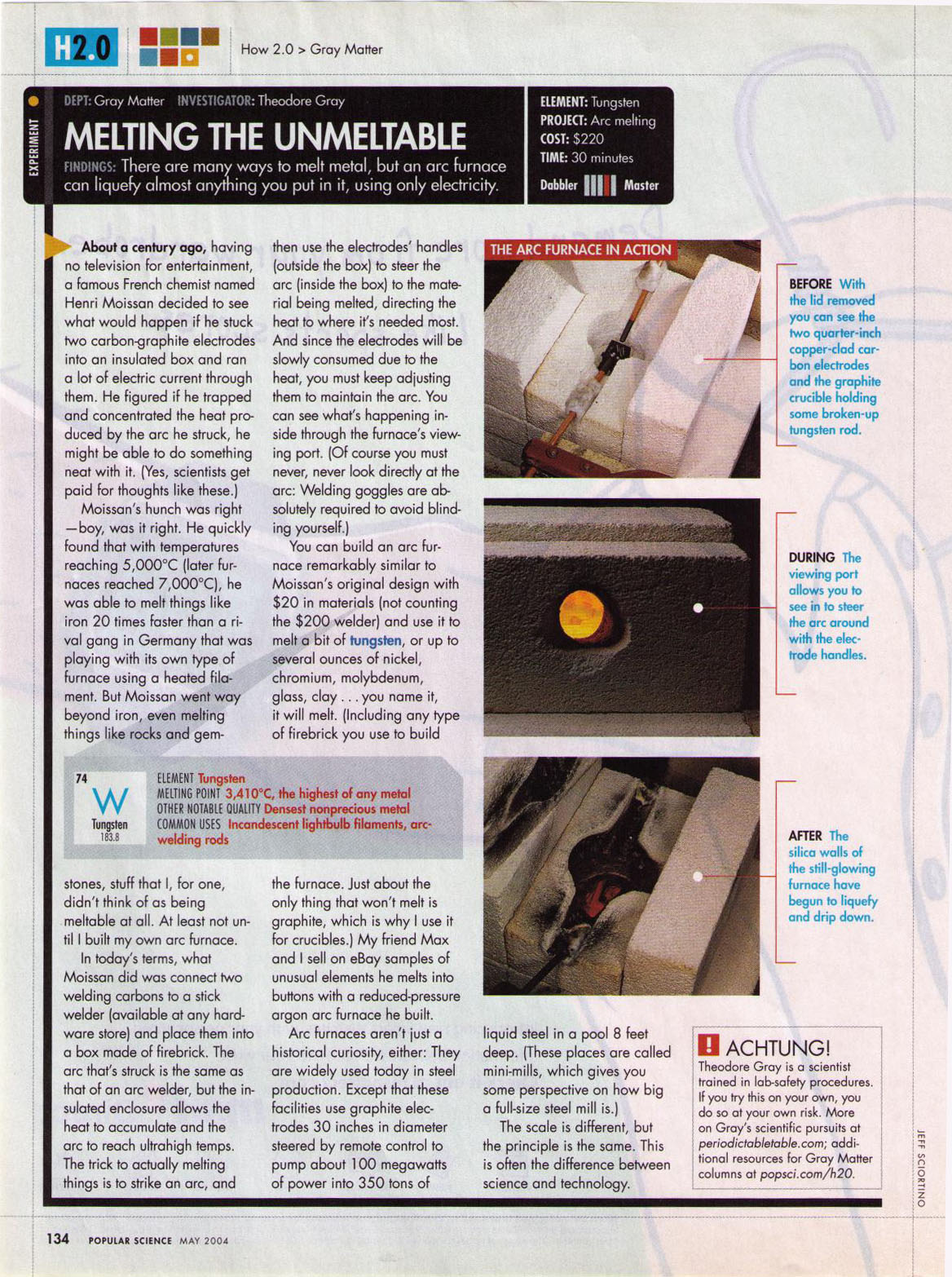About a century ago, having no television for entertainment, a famous French chemist named Henri Moissan decided to see what would happen if he stuck two carbon-graphite electrodes into an insulated box and ran a lot of electric current through them. He figured if he trapped and concentrated the heat produced by the arc he struck, he might be able to do something neat with it. (Yes, scientists get paid for thoughts like these.)
Moissan's hunch was right-boy, was it right. He quickly found that with temperatures reaching 5,000°C (later furnaces reached 7,000°C), he was able to melt things like iron 20 times faster than a rival gang in Germany that was playing with its own type of furnace using a heated filament. But Moissan went way beyond iron, even melting things like rocks and gemstones, stuff that I, for one, didn't think of as being meltable at all. At least not until I built my own arc furnace.
In today's terms, what Moissan did was connect two welding carbons to a stick welder (available at any hardware store) and place them into a box made of firebrick. The arc that's struck is the same as that of an arc welder, but the insulated enclosure allows the heat to accumulate and the arc to reach ultrahigh temps. The trick to actually melting things is to strike an arc, and then use the electrodes' handles (outside the box) to steer the arc (inside the box) to the material being melted, directing the heat to where it's needed most. And since the electrodes will be slowly consumed due to the heat, you must keep adjusting them to maintain the arc. You can see what's happening inside through the furnace's viewing port. (Of course you must never, never look directly at the arc: Welding goggles are absolutely required to avoid blinding yourself.)
You can build an arc furnace remarkably similar to Moissan's original design with $20 in materials (not counting the $200 welder) and use it to melt a bit of tungsten, or up to several ounces of nickel, chromium, molybdenum, glass, clay . . . you name it, it will melt. (Including any type of firebrick you use to build the furnace. Just about the only thing that won't melt is graphite, which is why I use it for crucibles.) My friend Max and I sell on eBay samples of unusual elements he melts into buttons with a reduced-pressure argon arc furnace he built.
Arc furnaces aren't just a historical curiosity, either: They are widely used today in steel production. Except that these facilities use graphite electrodes 30 inches in diameter steered by remote control to pump about 100 megawatts of power into 350 tons of liquid steel in a pool 8 feet deep. (These places are called mini-mills, which gives you some perspective on how big a full-size steel mill is.)
The scale is different, but the principle is the same. This is often the difference between science and technology. |
|

